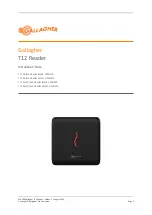
FastTrak TX2000™ Series User Manual
59
Drive Issues
Q: Can I add a drive to a FastTrak TX2000 RAID array via hot-swap and dynamically
adjust the array size/configuration?
A: No. The FastTrak TX2000 system does not support dynamically adjustable RAID
size/configurations.
Q: Do the HDDs on the FastTrak TX2000 have to be the same size?
A: The HDDs that you use with the FastTrak TX2000 do not have to be the same size. If the
sizes differ, the FastTrak TX2000 will “adjust” the HDDs so that they are compatible.
Basically, it will truncate the bigger HDD so the sizes match. Any unused space that
results from this is unusable, so don’t use HDDs that differ too much. It’ll work, but it’s a
waste.
Q: I already have an array on an older FastTrak controller. Can I move that array to my
new FastTrak TX2000 controller?
A: Yes. All FastTrak controllers read the arrays the same way and can be moved from
controller to controller.
Q: Can I take a drive used in a FastTrak TX2000 array and access it directly with a
different controller, such as the one integrated on the motherboard?
A: Yes, but only under certain configurations. The following array configurations will allow the
drive(s) to be accessed individually on another controller: mirror (RAID 0), single drive
striped (RAID 1), or single drive spanned (JBOD). Multiple drives striped or spanned will
not work. Also, the controller must address the drives as LBA, not CHS.
Q: If I have a problem with one of the drives on the FastTrak TX2000, how can I low
level format it to correct the problem?
A: Do NOT do this. Low-level formatting IDE drives is unnecessary and generally does not
correct problems that might be experienced during use. Errors such as bad sectors or
ECC/CRC failure are best remedied by completely replacing the drive. For this reason,
drives attached to the FastTrak TX2000 controller should NOT be low level formatted.
Q: Do I have to install disk management software on my array in order to access the
full storage capacity of drives?
A: No! Disk management software would only complicate things. The array should be fully
addressable by your O/S as it is. Remember that some operating systems have varying
limits on the sizes of partitions and logical drives that can be defined. Consult your O/S
documentation about partitioning larger drives.
Q: What system BIOS CMOS settings do I use for the drives on the FastTrak TX2000
controller?
A: None. The drives on the FastTrak TX2000 controller are supported by the FastTrak
TX2000 BIOS and/or an O/S drivers, not by your system BIOS.
Q: How do I partition/format my FastTrak TX2000 RAID array?
A: The FastTrak TX2000 “fools” the system into thinking that it’s dealing with a single HDD.
Therefore, anything that you can do to a single HDD can also be done to a FastTrak
TX2000 array. You can, and should, use the FDISK and FORMAT utilities to
partition/format the array. You can partition the array however you see fit. You can format
the array with whatever file system you wish.








































